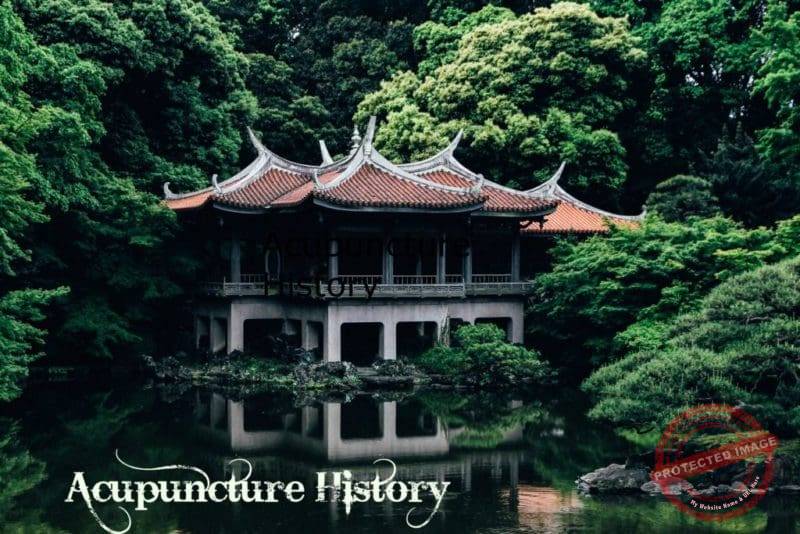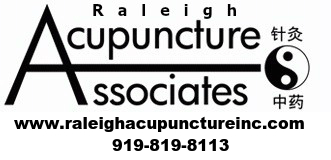
Acupuncture History
Acupuncture history began in China around 8,000 B.C. during the new Stone Age. Back then they did not use needles. They used a type of stone called “Bian” to puncture abscesses and lesions on the skin. This technique healed wounds by draining toxins from the body. As acupuncture developed over the centuries, so too did the acupuncture needle. It evolved from using stone needles to needles made from animal bones. During the Qin Dynasty metal was developed and metal needles replaced bone. There were copper needles, then silver and gold. Today we use sterile, one-time-use, stainless steel needles.
The earliest known textbook on acupuncture history and Chinese medicine is called “Huang Di Nei Jing” which was written between 770 B.C. and 221 B.C. during the Spring/Autumn and Warring States eras. This book described in detail the theories of the acupuncture diagnostic system. These theories, which are still used today, include the Yin/Yang theory, Five Element theory, Organ (Zang/Fu) theory, Meridian theory, and Qi/Blood theory. Together they form the basis and foundation for Chinese medicine, which treats a person’s health in a holistic way.
Meridian theory is the most important theory in acupuncture history. Through centuries of observation, clinical practice and detailed documentation, Chinese doctors discovered sets of points on the body that, when needle properly, were able to resolve disease. By the 3rd century A.D., Chinese doctors had documented 365 acupuncture points located on 14 meridians, or pathways, on the body. From the 3rd to the 19th century, Chinese doctors documented a few hundred additional acupuncture points, called “extra” points, which are not on the main meridians. Acupuncture points, when needled, have amazing properties, including the ability to conduct sensations up and down the human body, influence organ function, and interact with other acupuncture points along the meridians.
As early as the 6th century, doctors from Japan and Korea came to China to learn acupuncture and acupuncture history. Chinese doctors also traveled to Japan and Korea to teach acupuncture and acupuncture history. Acupuncture spread to Europe in the 16th century, and became known to the U.S. in the 1970’s. In 1971, the New York Times reporter James Reston went to China on business. During his visit, he was struck with an acute case of appendicitis. He went to a Chinese hospital to get treatment. The Chinese doctors successfully removed his appendix using acupuncture anesthesia and treated his post-surgery pain with acupuncture. He was very impressed with the acupuncture he received. When he came back to the U.S. he wrote an article about his experiences with acupuncture and acupuncture history. That started the awareness of acupuncture in the U.S.

Acupuncture History – How Does It Work?
This is our most commonly asked question. Thousands of research hospitals and institutes around the world are investigating this topic. To truly understand how acupuncture works, one must understand Chinese history and philosophy as well as acupuncture history. But for the purposes of this article, I am going to give a simplified answer to this profound question. Chinese doctors treat patients based on Chinese medicine theory. Disease forms only when the body is out of balance. When out of balance, the patient experiences symptoms and the body shows signs that indicate the underlining problem. These clues, when properly understood, are the key to being able to correct the imbalance. That is why acupuncture is so effective in treating diseases early on, and why it can be used for disease prevention.
Have you ever felt not your best? You start getting more headaches, or your stomach hurts all the time for no reason. You begin to have difficulty falling asleep, or you start feeling anxious. You see your doctor and go through all the tests and lab works, but everything appears normal. Your doctor is sympathetic, but tells you there’s nothing wrong. You probably think you are going crazy. You are not crazy! Your body is trying to warn you by sending messages in the form of symptoms. Chinese doctors look at the signs and symptoms you are having and then treats the underlining disharmonies causing them, to bring you back to health. When your body is balanced, the symptoms resolve themselves. If you ignore your body’s signs and symptoms, the underlining disharmonies continue to grow until your body is so out of balance that the lab work will come back positive. By then the disease has gone on to a more advanced stage and is harder to treat. By coming to acupuncture and treating your disharmonies early, when they are still minor, your body will return to its natural homeostasis and optimal healthy.
When you come for acupuncture, the Chinese doctor will examine you using four diagnostic tools. The results of this examination will determine your Chinese medical diagnosis. The four diagnostic tools from acupuncture history include (1) observation, (2) smelling, (3) asking and (4) palpation. “Observation” involves the Chinese doctor looking at your face, tongue, skin, nails, hair, etc. Chinese doctors pay close attention to their shape, color, markings, moisture, and shininess. When you have a disease that is forming, these qualities will start to deviate from the norm. “Smelling” involves the Chinese doctor paying attention to the smell the patient emits, including breath and the body’s natural odor. The Chinese doctor focuses on abnormally strong smells that are sour, sweet, burned, pungent or salty. “Asking” involves the Chinese doctor asking you questions in 10 categories:
1. Body temperature throughout the day
2. If there is any sweating during the day or night
3. Thirst and appetite levels, and types of food and drink consumed
4. Frequency and quality of bowel movements and urination
5. Physical pains or discomfort in the body
6. Chest or abdominal pains or discomforts
7. Ear problems like hearing loss or ringing in the ears
8. Sleeping problems, either falling asleep or staying asleep
9. Women patient’s period and pregnancy history
10. Infant and young children’s skin markings and rashes
With “palpation”, the Chinese doctor examines your pulse and palpates areas that have abnormal masses or markings.
After the 4 examinations, according to the information that is collected, the Chinese doctor will form a Chinese medicine diagnosis based on one or more of the following Chinese medicine theories:
1. Yin/Yang theory
2. Five element theory
3. Organ (Zang/Fu) theory
4. Body’s material foundation theory (Qi/Blood/Body fluid)
5. Eight principle theory (Yin/Yang, hot/cold, excess/deficiency, external/internal)
6. Six stage theory (for treating cold induced disorders) from acupuncture history
7. Four stage theory (for treating heat induced disorders) from acupuncture history
8. Three stage theory (for treating dampness and heat induced disorders) from acupuncture history
9. Channel/Meridian theory
After a proper diagnosis is formed, the Chinese doctor will choose the best combination of acupuncture points on the body to treat the condition. The doctor will then insert and activate the needles, causing them to stimulate the body’s unique healing energy called “Qi” (pronounced “Chi”). Once the Qi is activated, the body starts to repair itself. As we know, our bodies have amazing healing powers. That is why if we have a cut on our hand, we don’t need to apply anything to the wound. The wound will heal itself over time. Acupuncture needles inserted into the proper location activate the body’s own energy to heal disease and resolve symptoms. The meridian system is like a highway system. It connects the surface of the body to the internal organs. Stimulating points on the body’s surface activates the body’s healing energy, which travels through the meridians to the internal organs, enabling proper organ function to be restored. This, in turn, brings the body back into proper balance and into good health.
What Does Acupuncture Feel Like?
When acupuncture needles are inserted and the body’s healing energy is activated, the patient can feel a variety of sensations around the area of the needle, including warming, cooling, tingling, pressure, pulling, soreness, itchiness, or heaviness. These sensations are very mild. One has to pay attention in order to feel them. They can also travel up and down the body along the meridian. The sensations last a few seconds and then dissipate. Most people feel relaxed during treatments in our practice. They often fall asleep. After the treatment, people feel rejuvenated with a sense of well-being.
What Is Acupuncture Effective In Treating?
Acupuncture is effective at treating many different symptoms and diseases. The following examples are conditions we treat with over a 95% success rate: shoulder pain, knee pain, back pain, carpel tunnel, tendonitis, muscle tightness and pain, headaches/migraines, sleep issues, anxiety/depression, digestive issues, skin issues, sexual dysfunction, fertility issues, pregnancy issues, and weight issues. For a more comprehensive list click ALL CONDITIONS WE TREAT. If you have questions or just want to talk with a well-trained and experienced Chinese doctor, you can call us at 919-819-8113.
About Jinmei Xu Lic. Ac.
Jinmei Xu is a fourth generation acupuncturist and Chinese doctor. She studied initially with her grandmother Dr. Fu Gui Liu, and her father Dr. Weidou. Xu. She had advanced training with famous Chinese doctors including Dr. Shizhi Gu, Dr. Wen Zhang, and Dr. Ming Zhu.


Leave a Reply